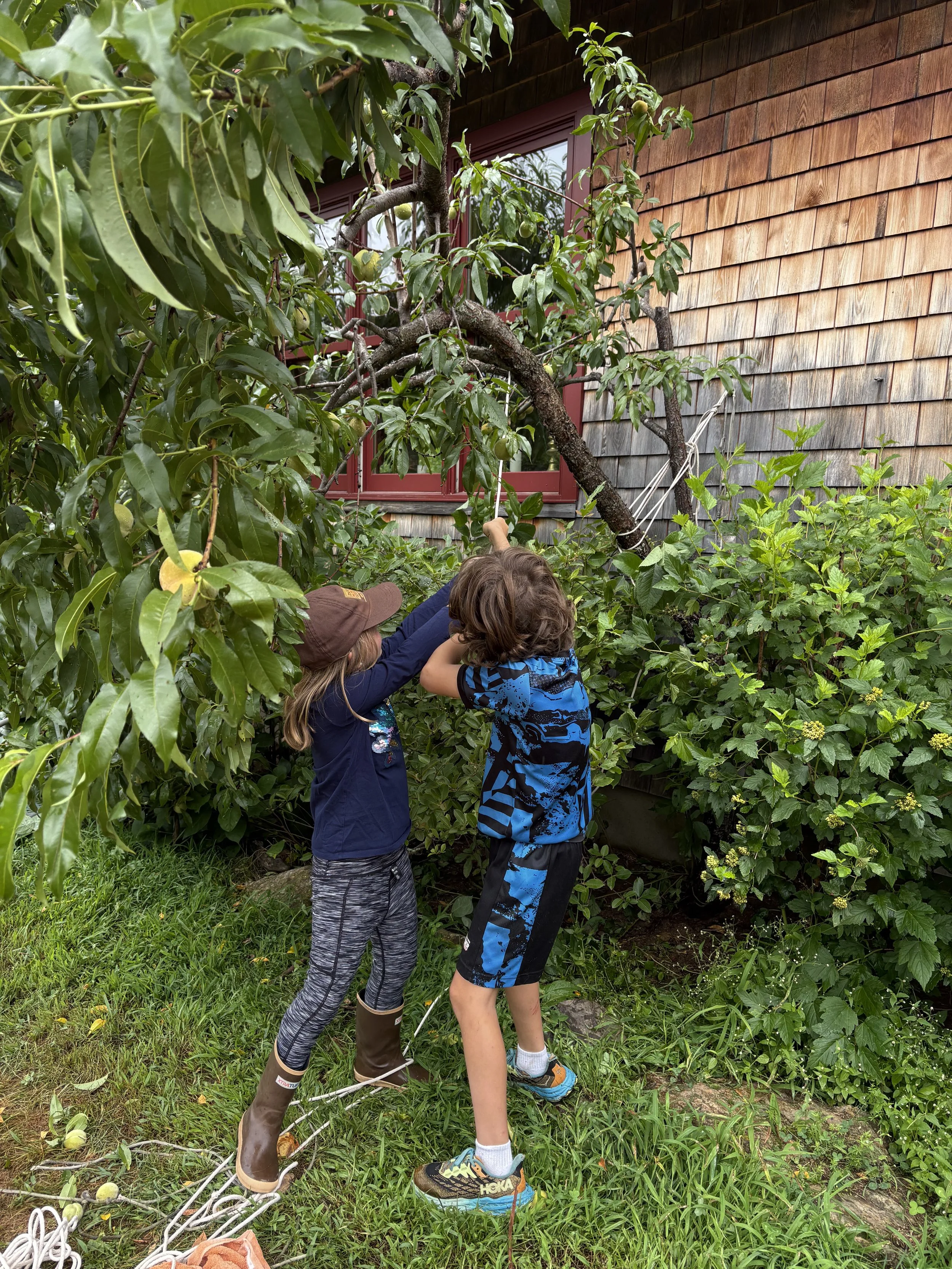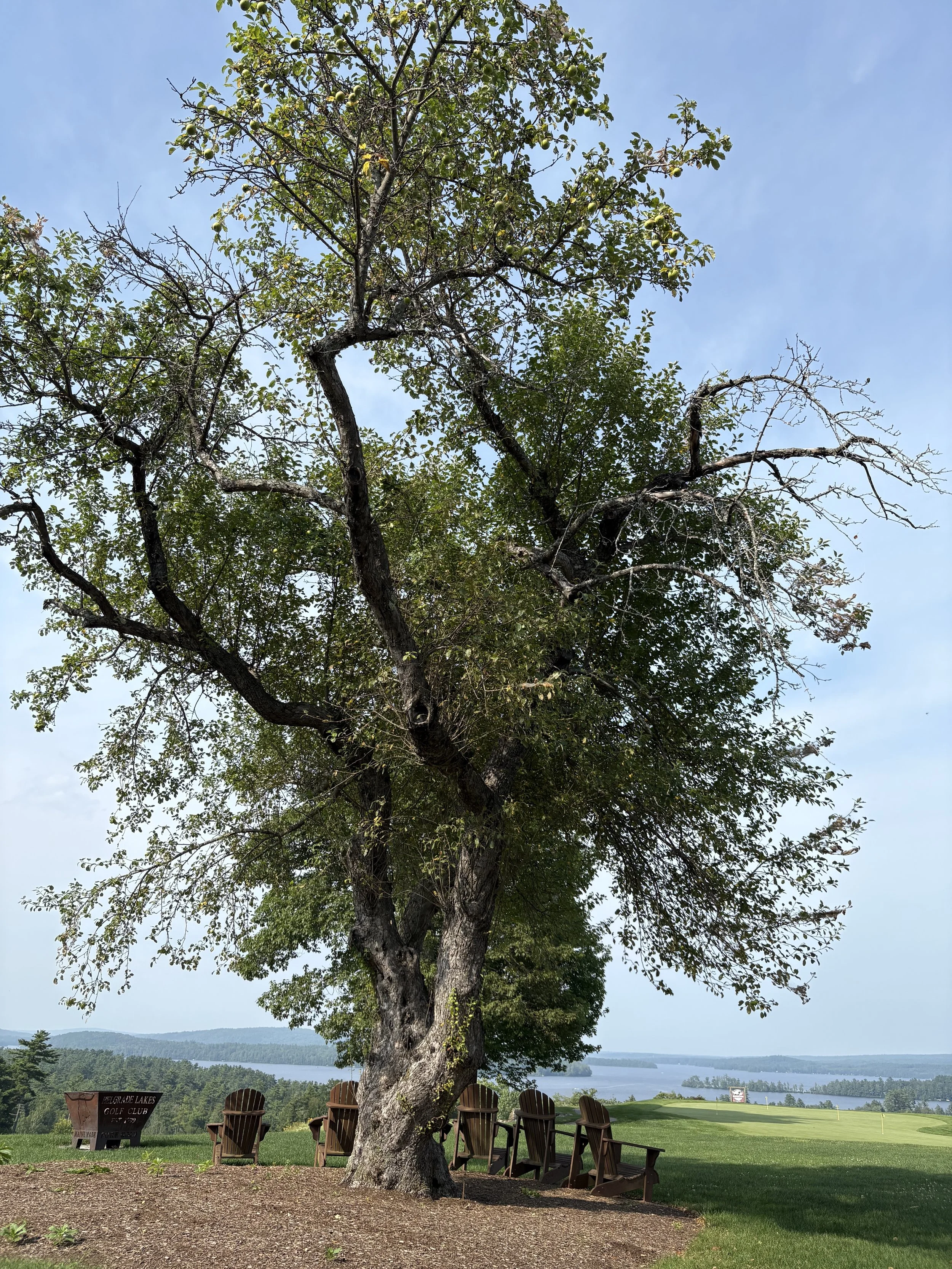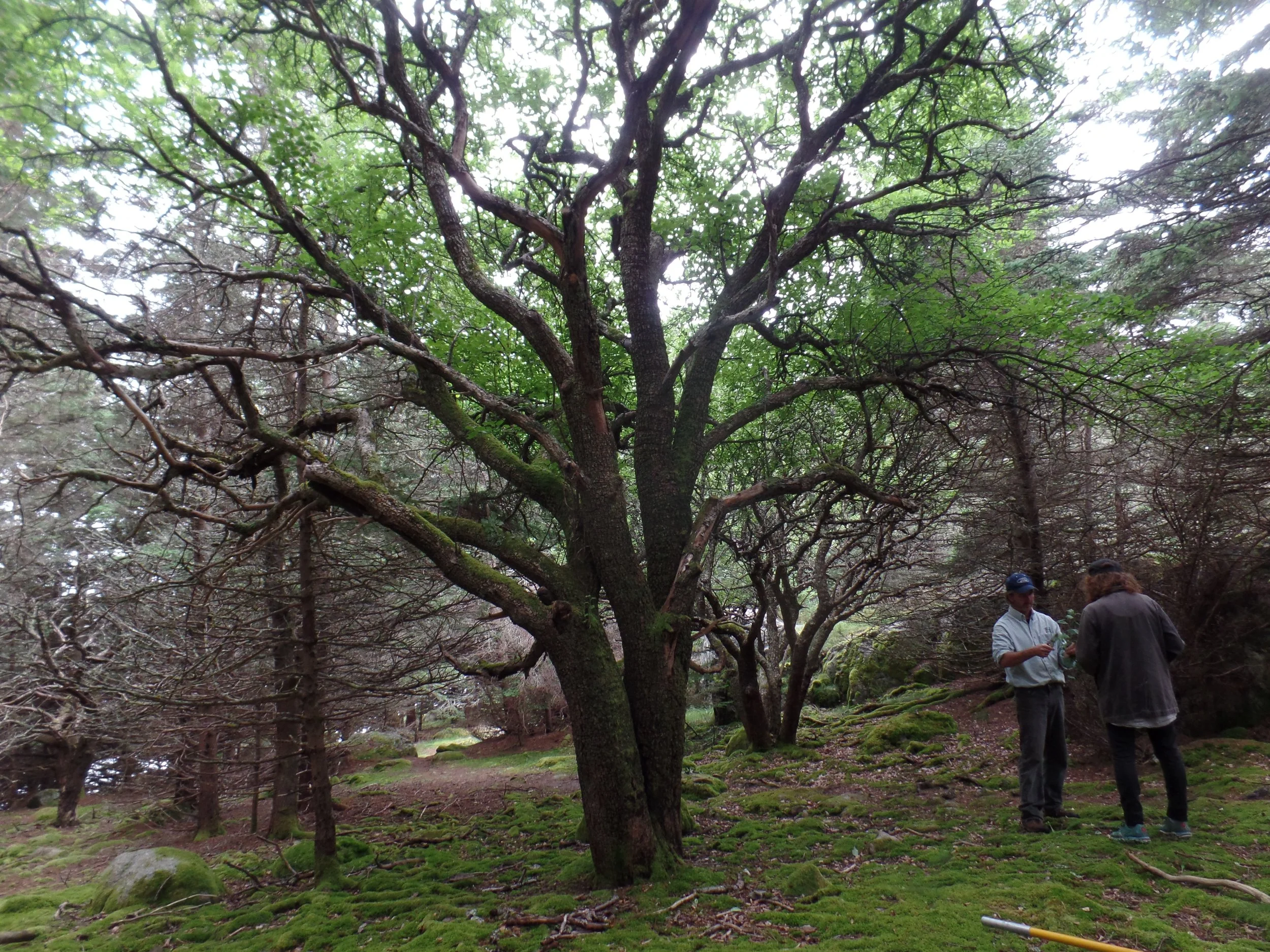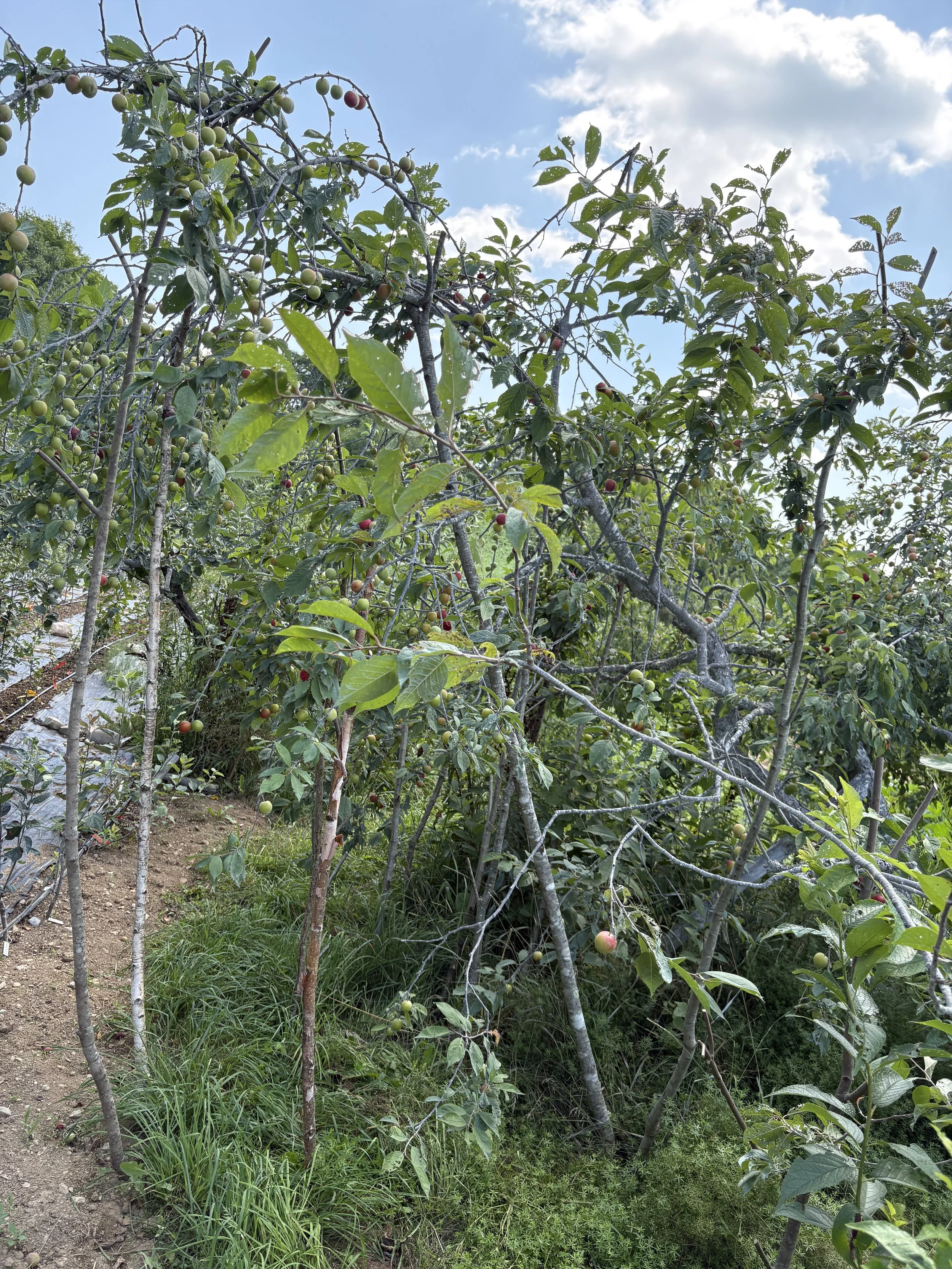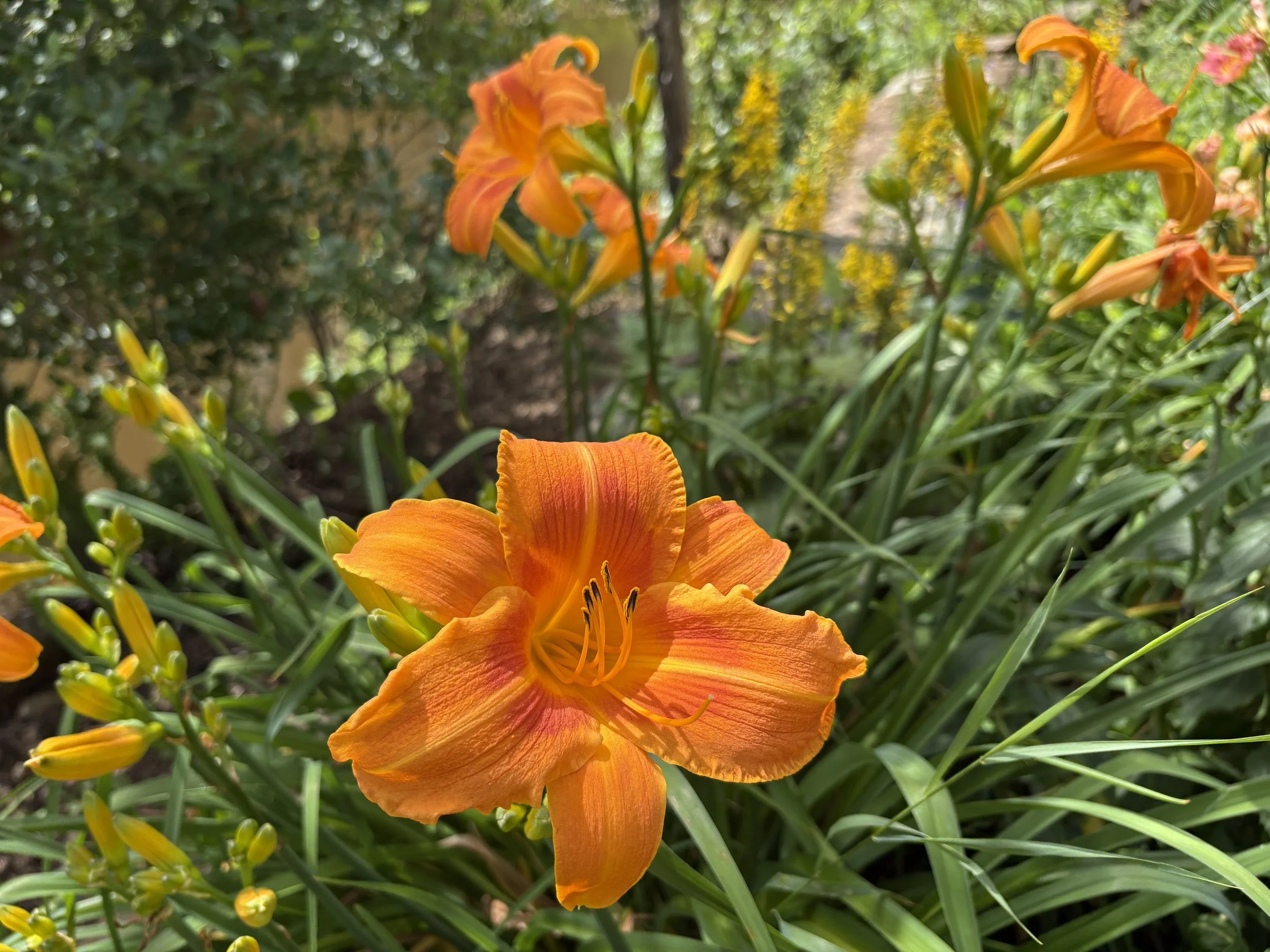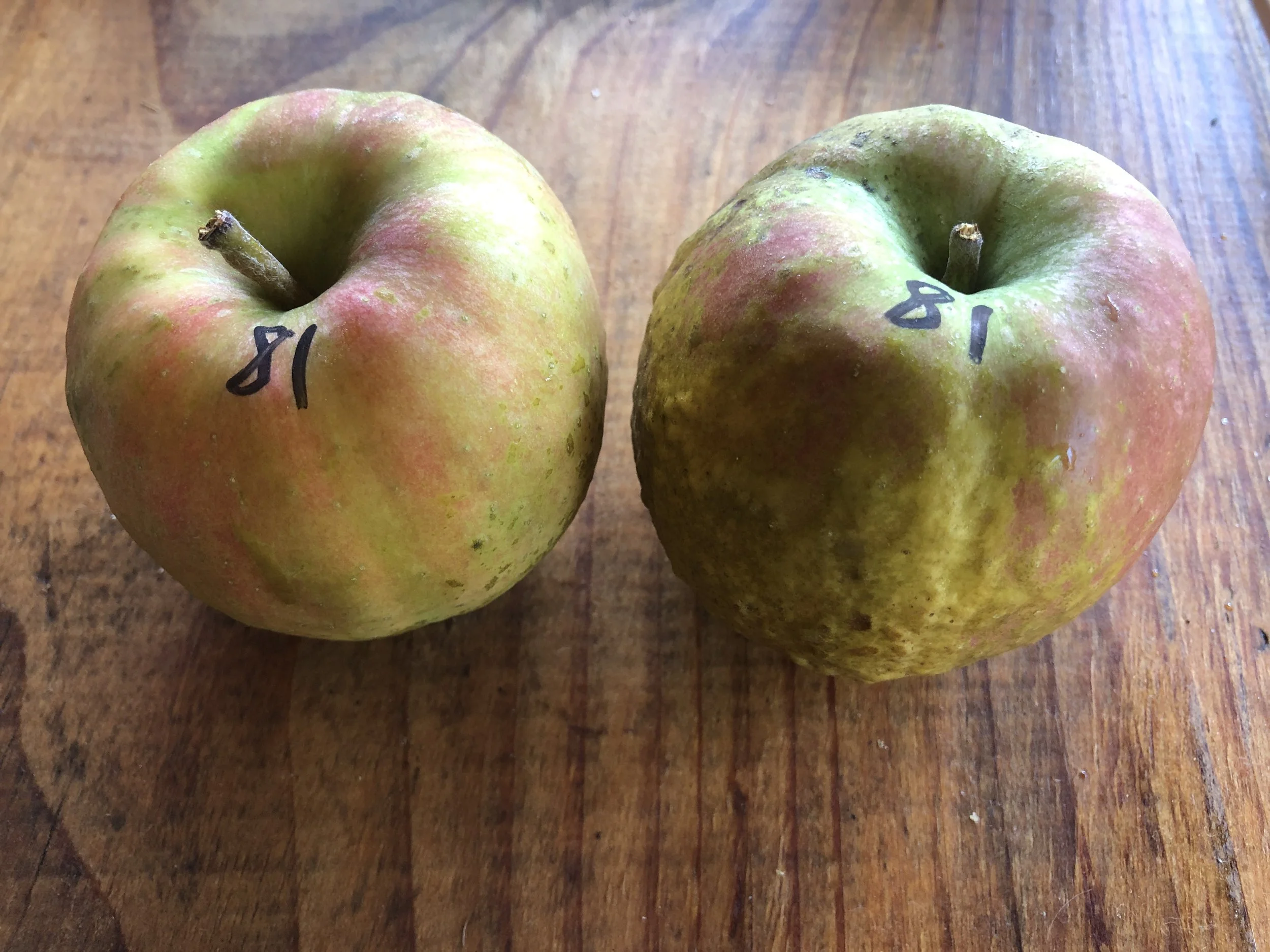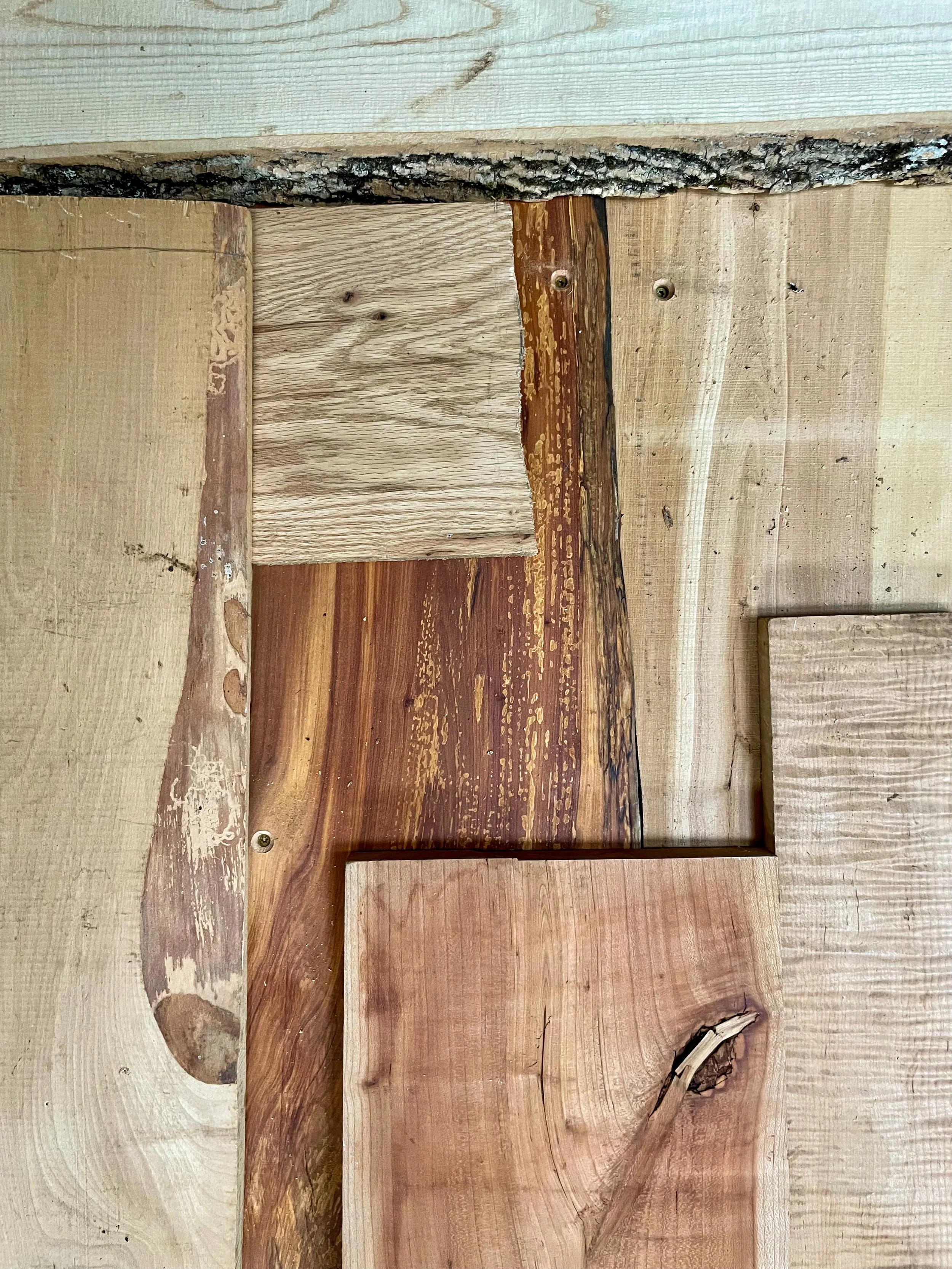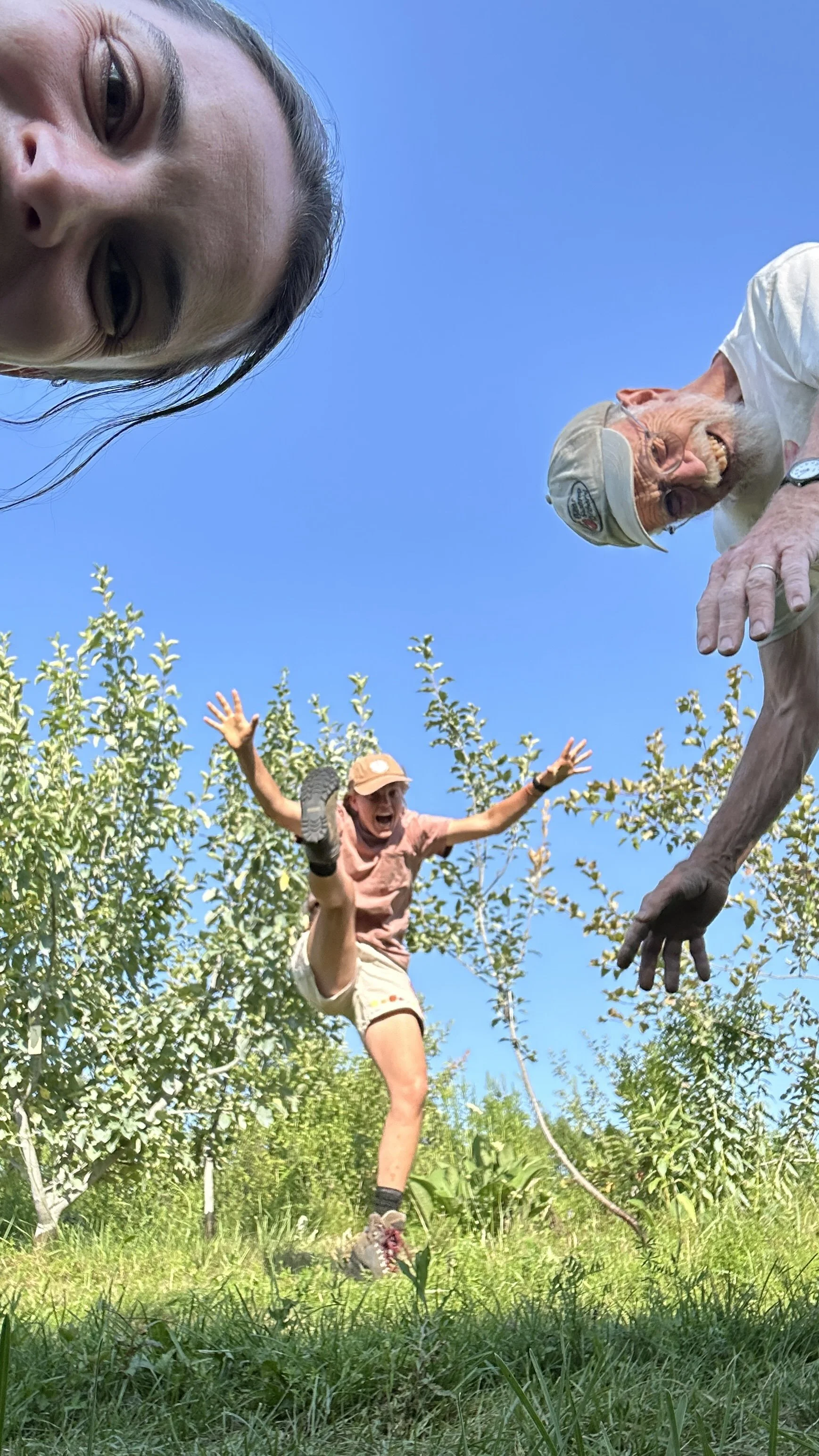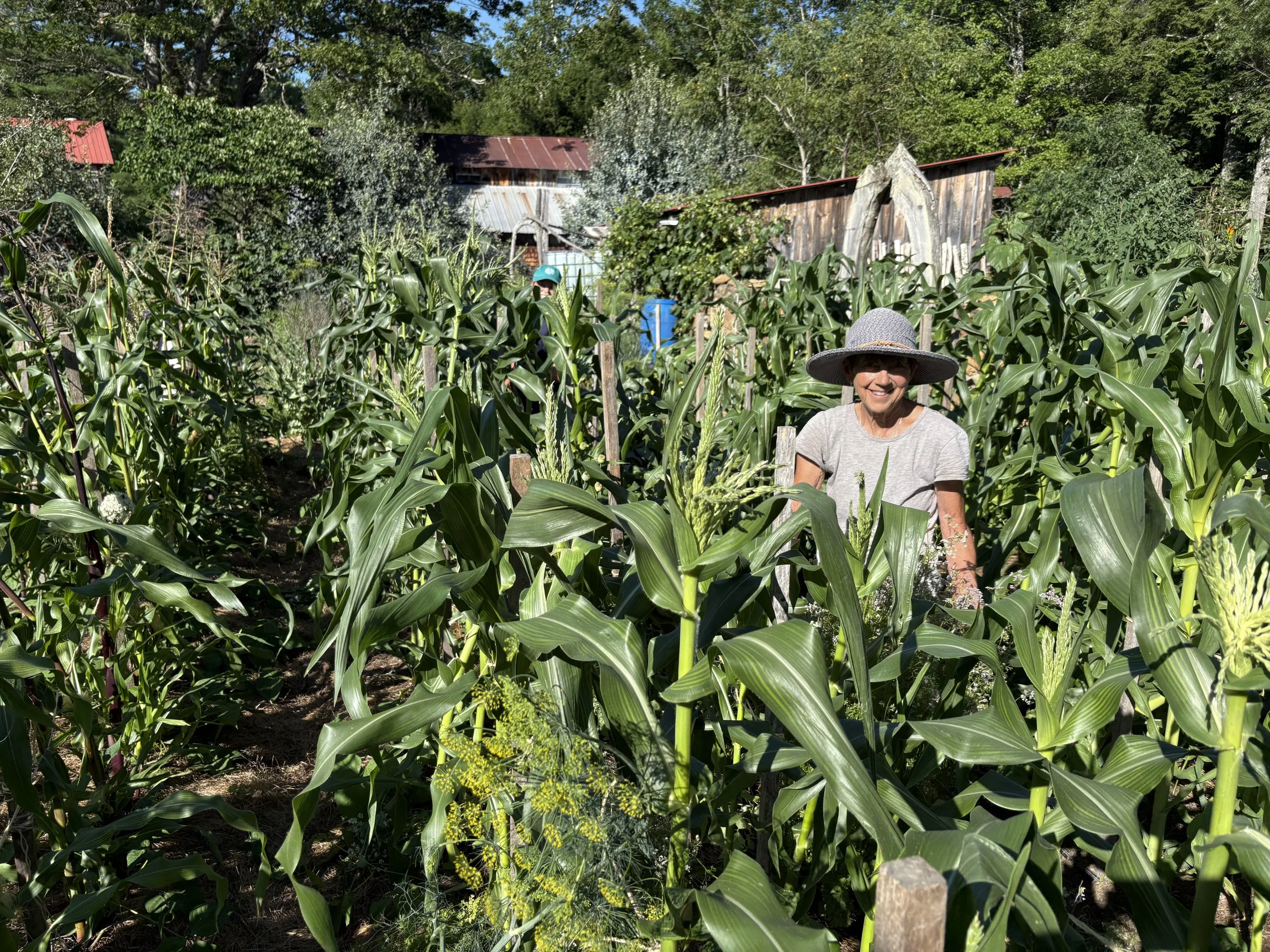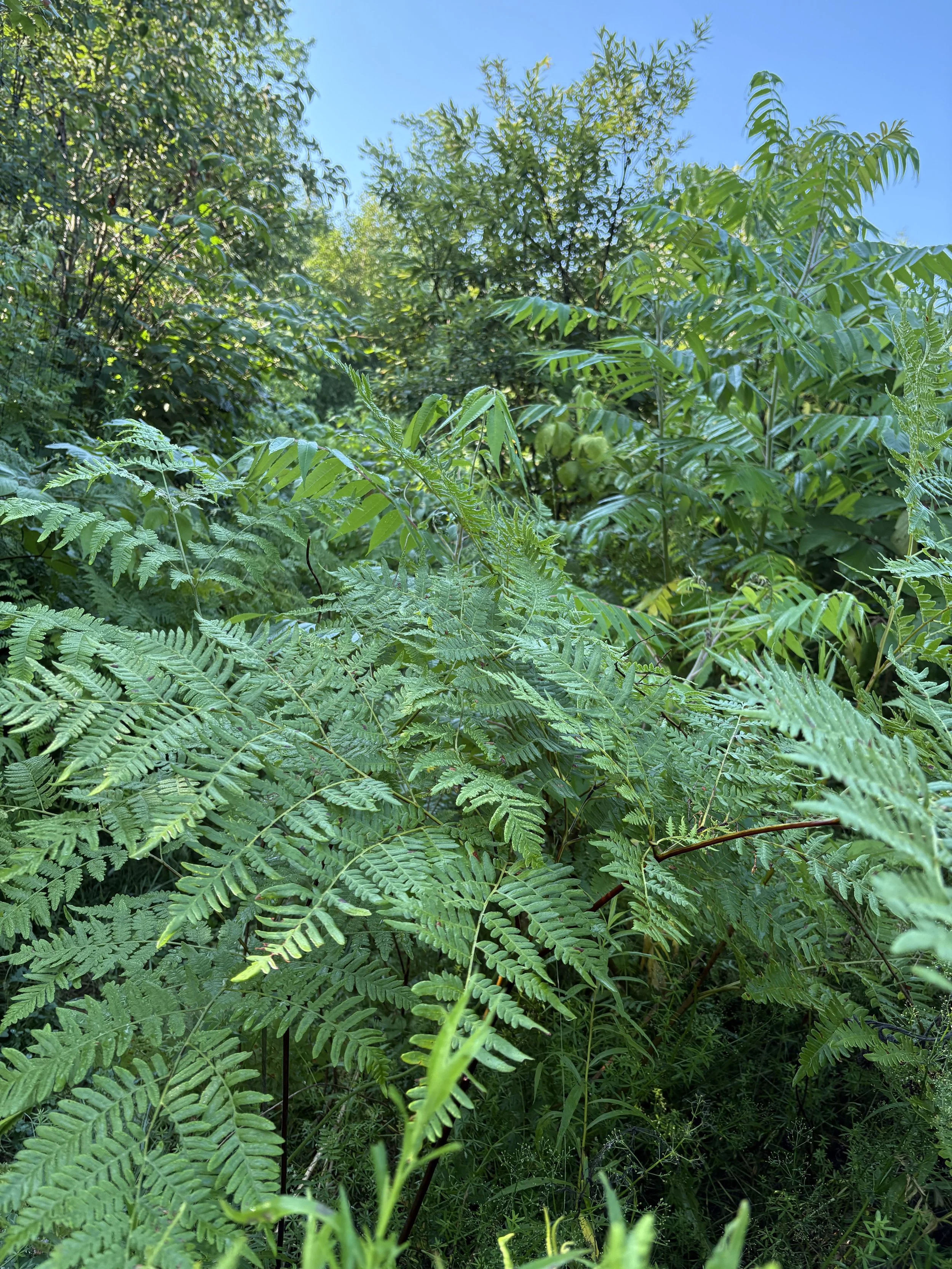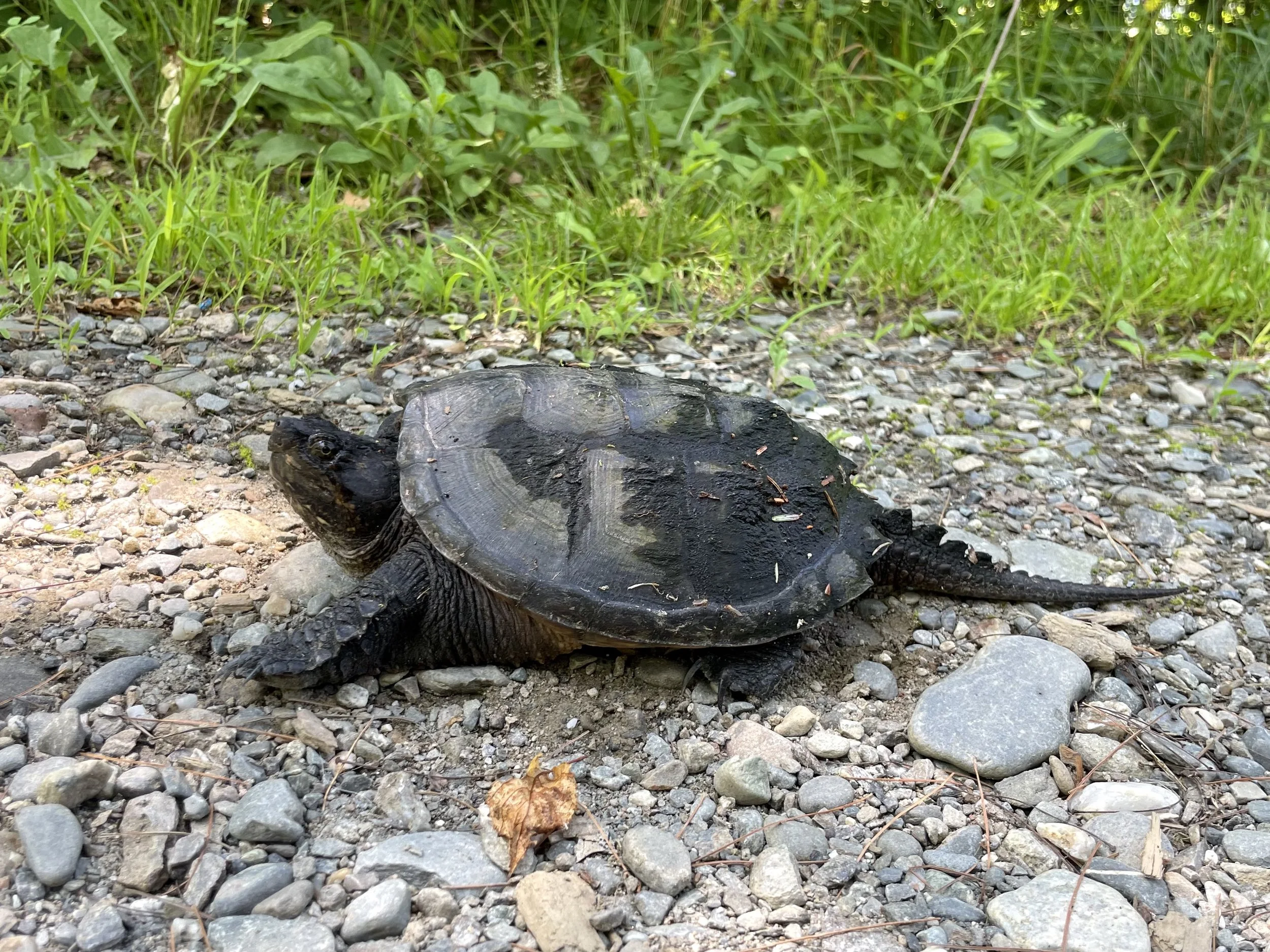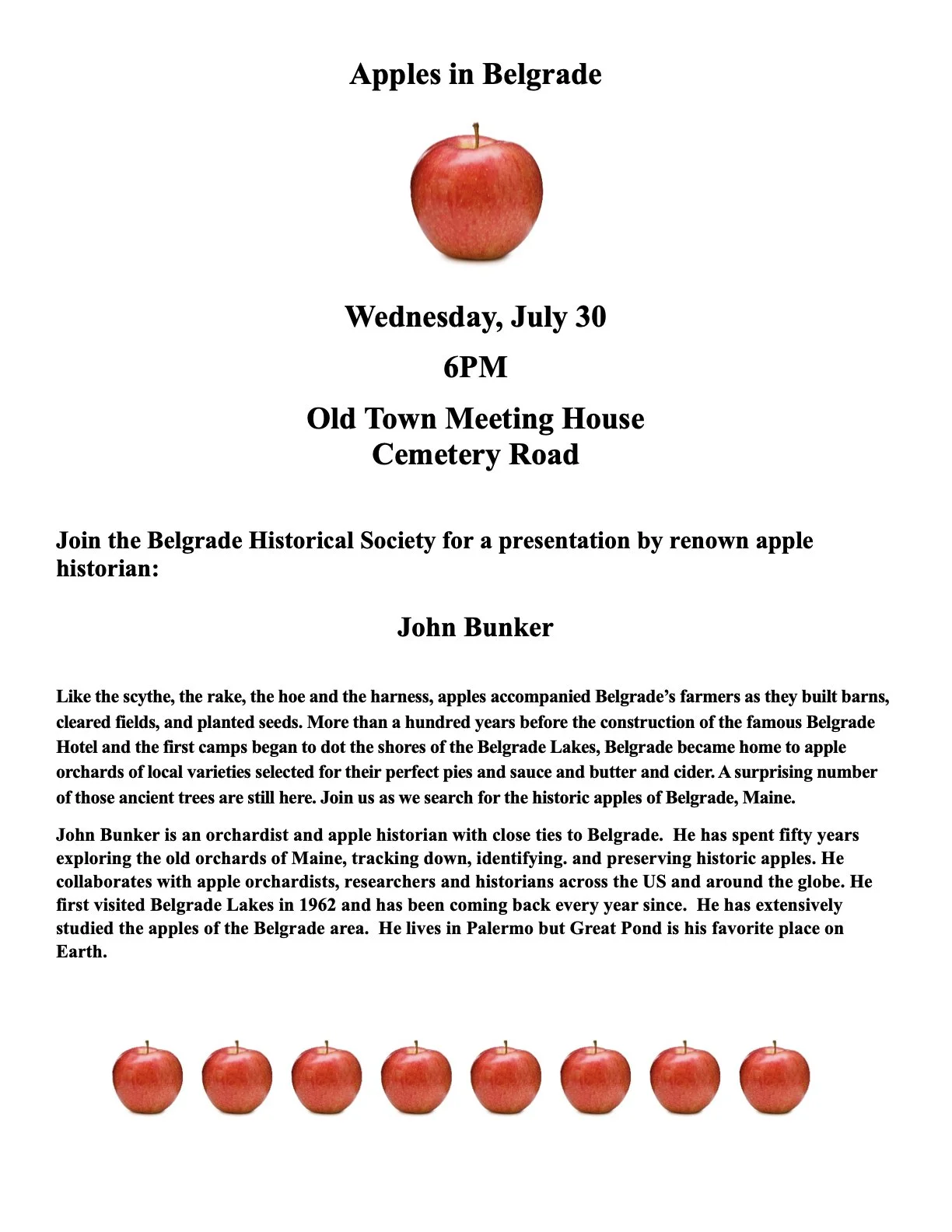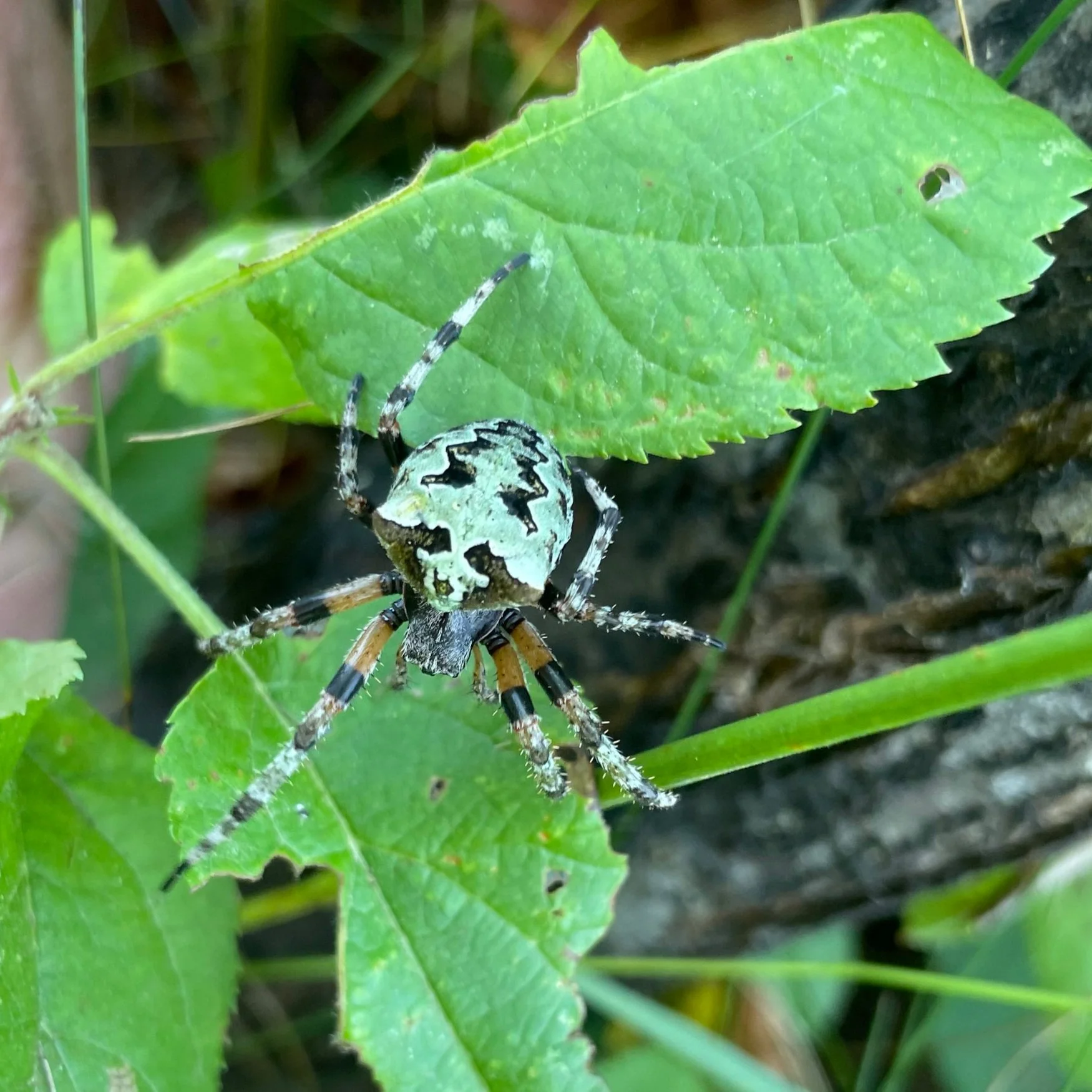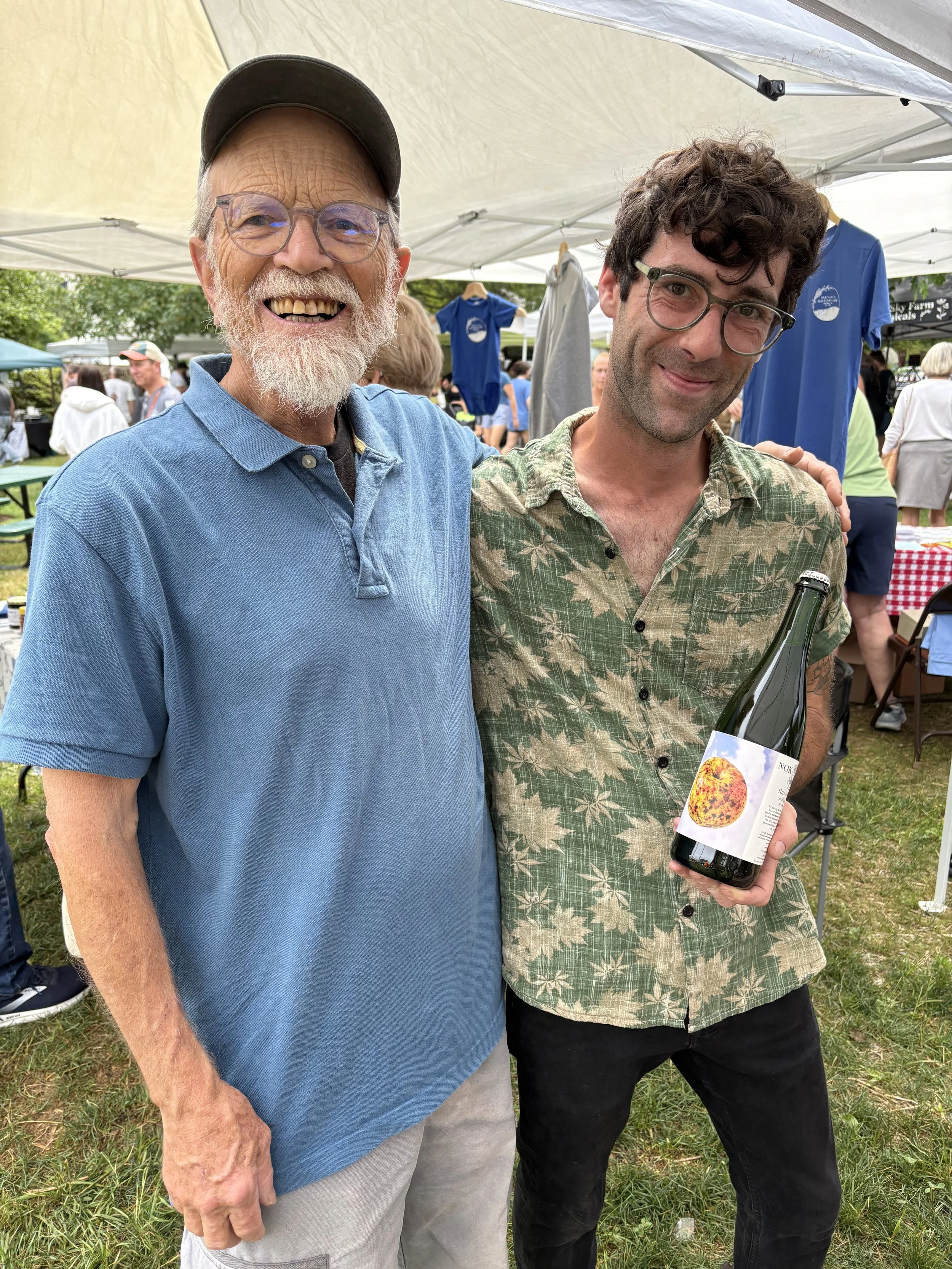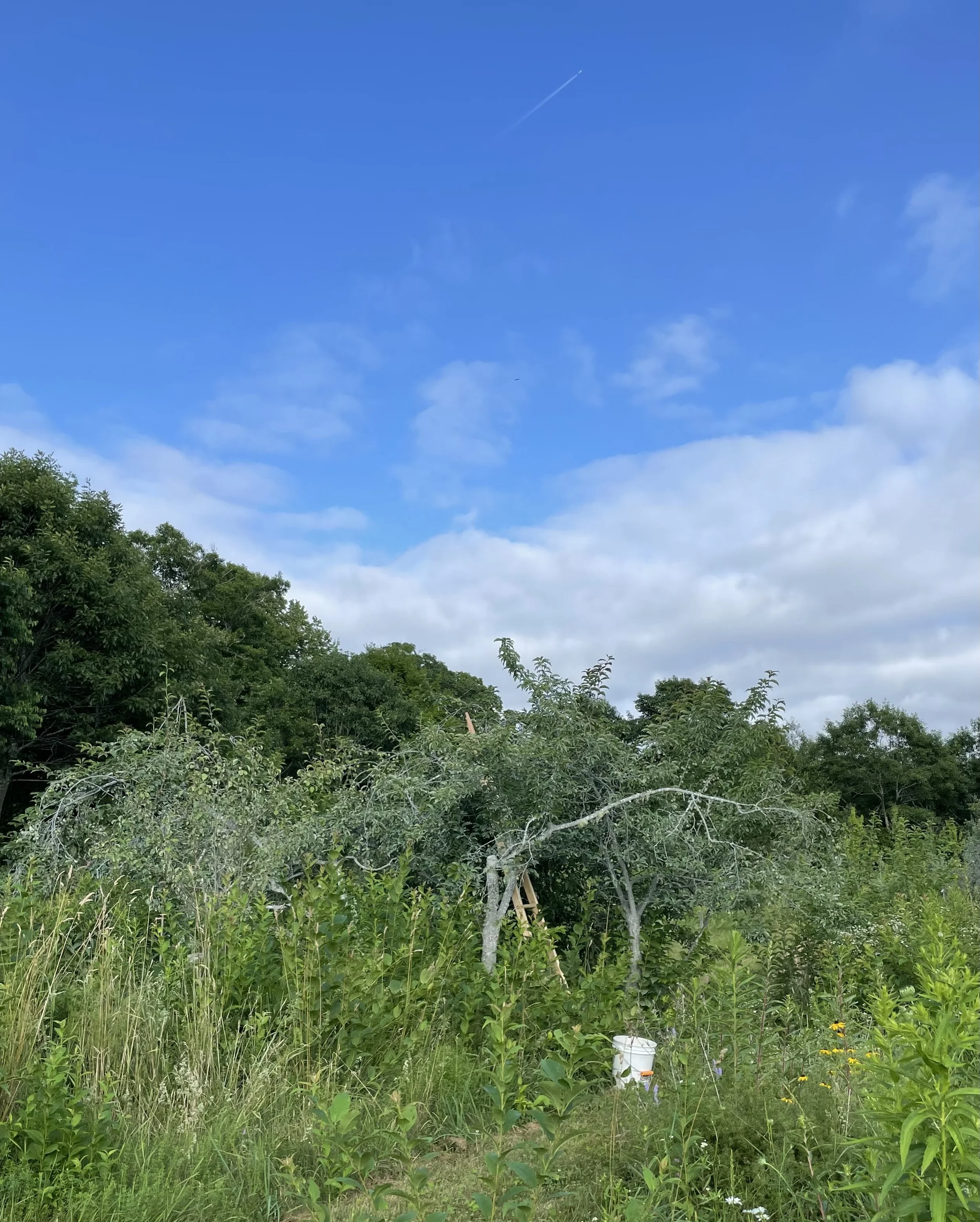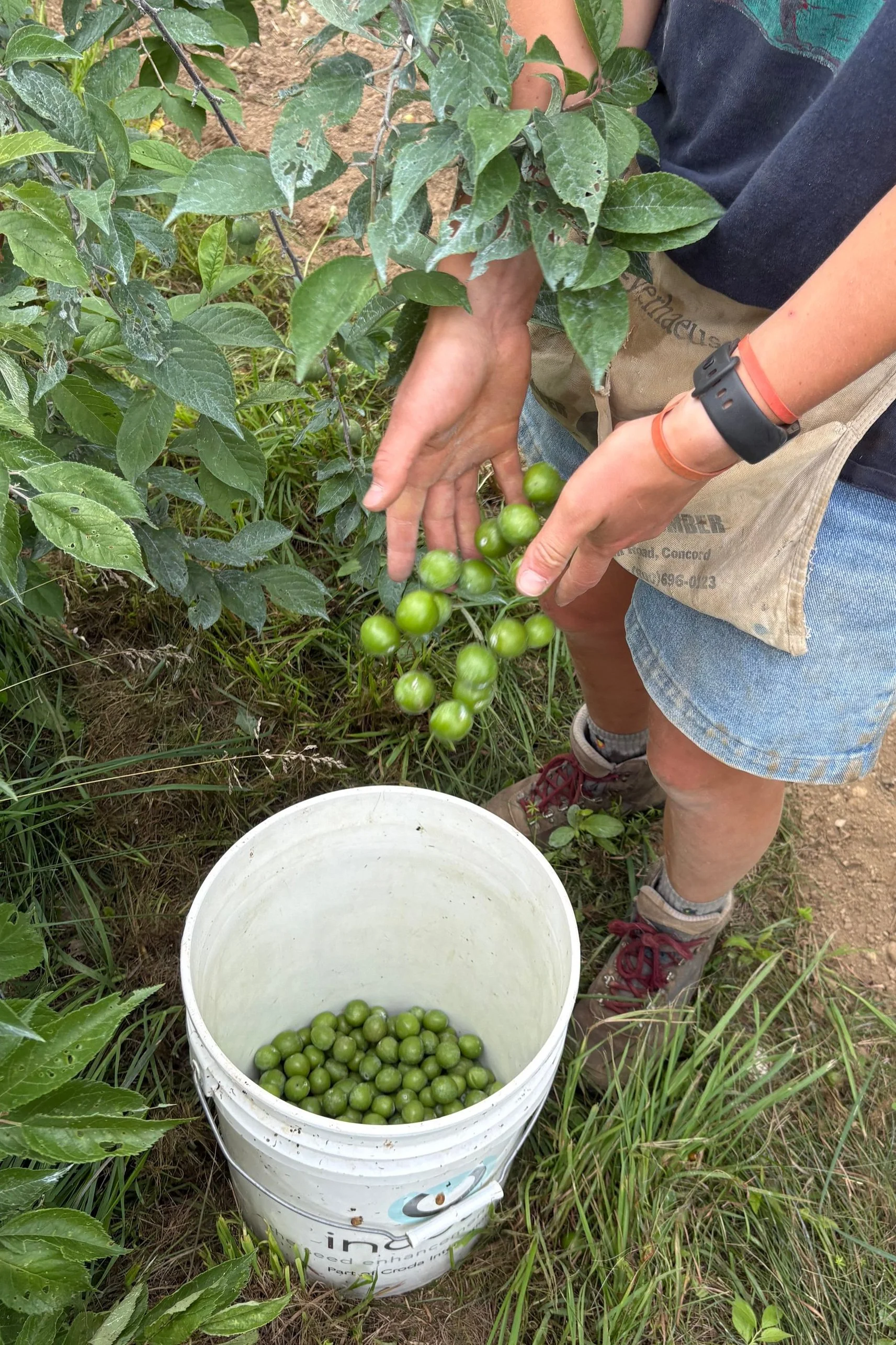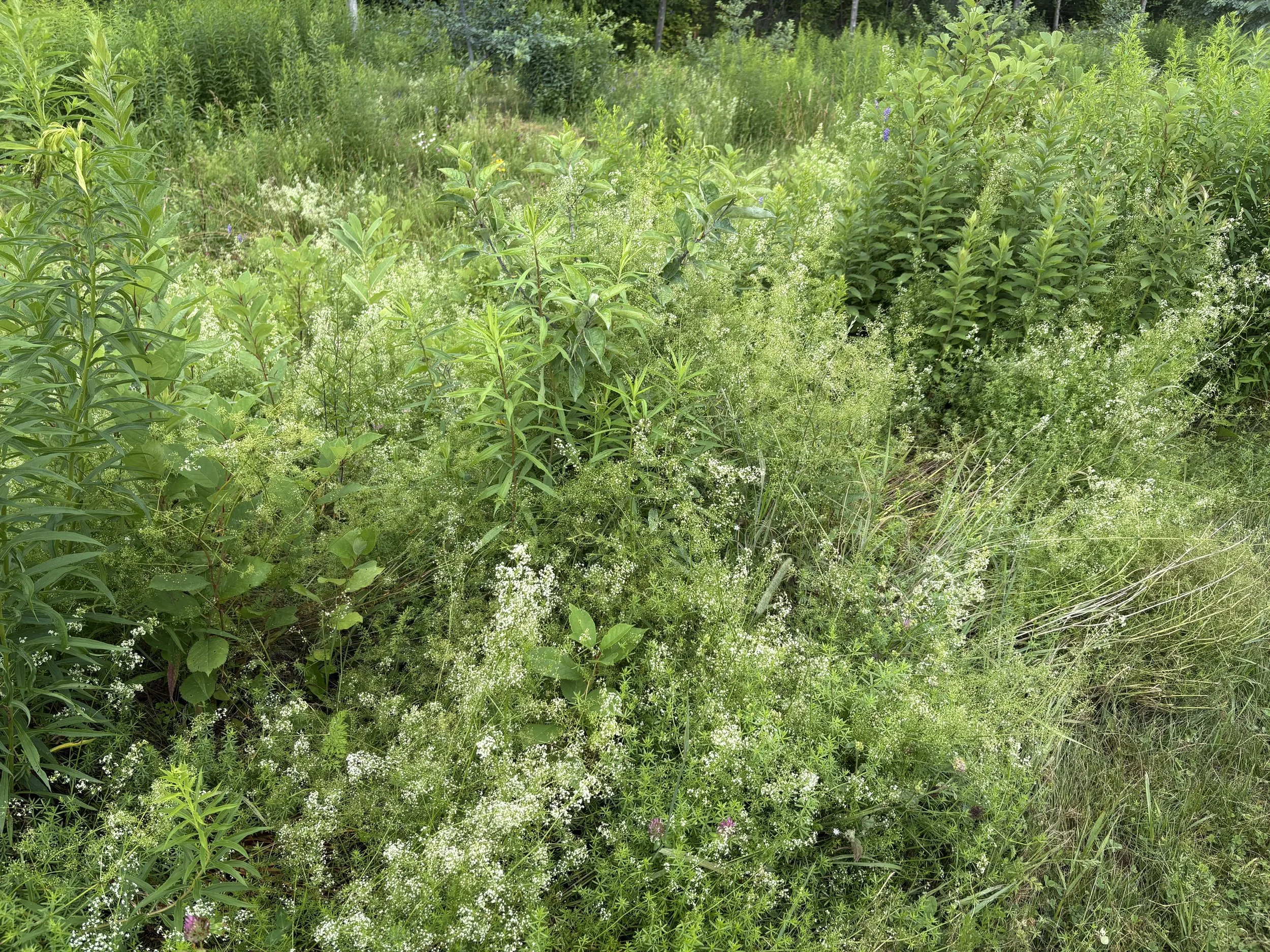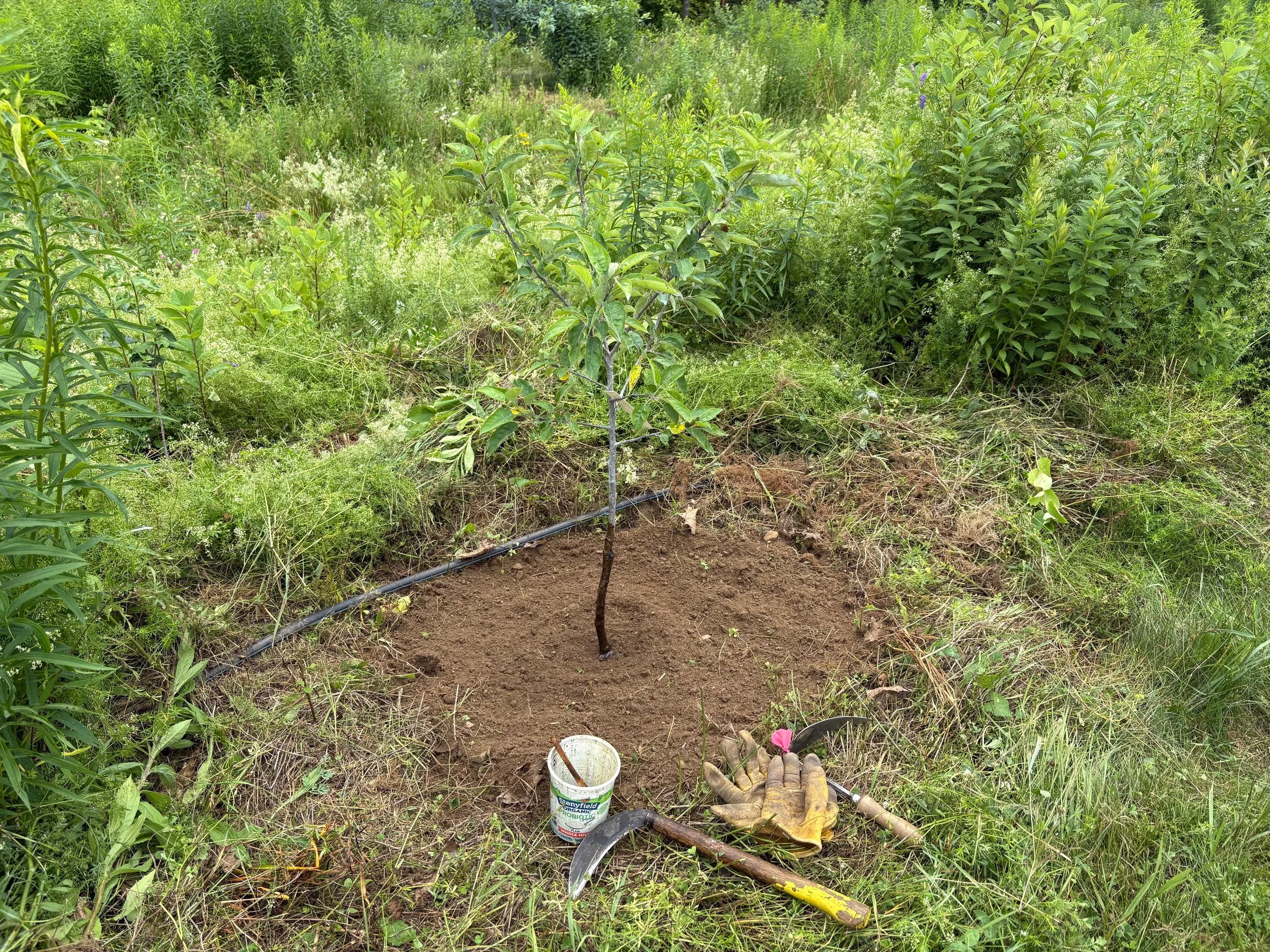Today in the orchard
Overall it’s been a dry summer in central Maine although, fortunately, we’ve been getting some rain. An inch a week is about the perfect amount (not to be too greedy), especially when it comes gently overnight or on a day when we really need to do some inside work. Last night we got an inch in one big burst - too much too fast. It took down one of our oldest and most productive peach trees, one that’s been growing up against the house for the past fifteen years.
Lars Anderson rises again. July 31, 2025
The Lars Anderson peach was introduced to us by orchardist Waite Maclin who went by the name “Pastor Chuck.” Waite’s father-in-law was Lars Anderson, and the tree was on the lawn of their family place in Cushing, ME. Neither Waite nor anyone else knew the origin of the peach. It may have been a known variety though, more likely, it was a volunteer from a seed. In any event it is a great peach: productive, rugged, hardy and delicious. It even has a very decent crop this summer after multiple nights last winter of -20F. So, it was a major bummer to see it down.
But the Super Chilly farm team snapped into action. With the aid of the trusty Kabota, Chance, Hayes, Cammy and I were able to gently push the tree back up, re-tie it to the house and install three new sturdy braces. We lost a number of peaches, but it appears that the tree is fine and will live on. We’ll even get a crop in a few weeks.

